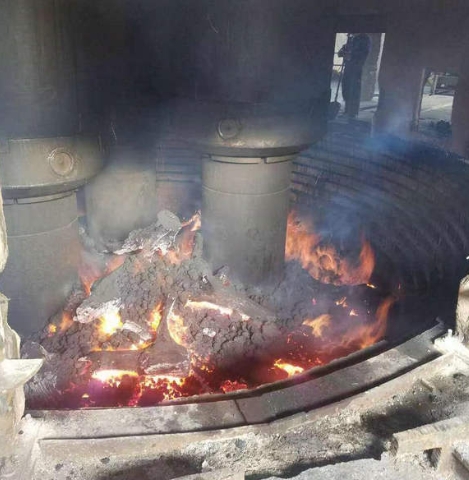
The global Electrode Paste for Aluminum Production industry reflects a demand for high-quality products that facilitate the melting of ferroalloys. This is mainly driven by the booming manufacturing sector throughout Asia which in turn fuels the need for aluminium alloys and other metals. The market is also boosted by the rise of smart cities, and the growing awareness about the environment. The volatility of raw materials prices is a threat to market growth.
The present invention provides electrode pastes for application on silicon wafers, the composition of which comprises particulate aluminum, an organic zinc component and optional frit composition (s). This is done mechanically using a powder mix technique such as roller grinding. Or, it can be dispersed by a mixer. The organic solvent can be an aliphatic and aromatic hydrocarbon; a saturated alcohol or un-saturated alcohol. The glass frit composition (s) can be in the form of a finely-ground amorphous or crystalline material. The proportions of the other metals (s) as particles can vary from 0-20%, or in one example, 5-10%, based upon the total composition.

Also, the electrode pastes in the present invention contain one or several organic additives. The tensioactives are rheology modulators, stabilizers, and fresantes. The tensioactives, like the fresantes or rheology modulators, can either be included as part of the organic vehicle.
These pastes feature excellent stability at a broad temperature range. This makes them useful for a number of different applications. Also compatible with water-based liquids or solvents such as acetone (or ethanol), isopropyl, and methylisobutyl, these pastes have a broad range of applications. Volatile organic solvents such as kerosene, dibutyl phthalate, hexylene glycol, diethylene glycol butyl ether and alpha or beta-terpineol can also be used. These solvents have a very high boiling point, and are easily miscible with other ingredients. They also have a low vapor pressure and are non-toxic. It also ensures that they can be handled and stored safely. The electrodes pastes of this invention are applied with a stamp using a stencil. Their dry film thickness can range between 15 and 60 mm. The drying can be done in an IR conveyor for a time period ranging from 1 to 100 min. The application viscosity of the coating can be determined at a rod-speed of 10 rpm with a temperature of 25oC using a Brookfield HBTS viscometer. The application viscosity is between 20 and 200 Pa s.

Write a Message